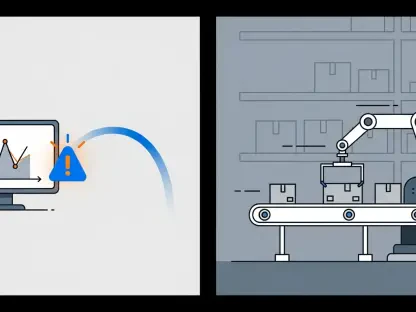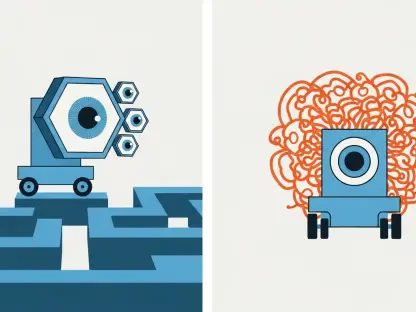I’m thrilled to sit down with Laurent Giraid, a renowned technologist in the field of Artificial Intelligence, whose deep expertise spans machine learning, natural language processing, and the ethical considerations of AI deployment. With a career dedicated to advancing how enterprises leverage AI, Laurent has been at the forefront of innovative infrastructure solutions. Today, we’re diving into the transformative potential of AI training platforms, exploring how they empower companies to customize models, reduce dependency on proprietary systems, and navigate the complexities of modern AI deployment. Our conversation touches on strategic shifts in the industry, lessons from past challenges, and the technical intricacies that make cutting-edge platforms stand out in a competitive landscape.
Can you share an overview of the latest advancements in AI training platforms and why the timing feels right for these innovations?
Absolutely. The latest AI training platforms are game-changers, focusing on enabling enterprises to fine-tune open-source models with ease, without the burden of managing complex GPU clusters or cloud orchestration. The timing is perfect because we’re seeing open-source models rival proprietary ones in performance, and companies are eager to cut costs and gain control over their AI solutions. There’s a growing demand for infrastructure that simplifies this process while allowing full ownership of models and data. It’s about meeting customers where they are—ready to move away from expensive, closed systems.
How do these platforms align with the broader mission of empowering enterprises in the AI space?
These platforms are built to democratize AI by providing the tools enterprises need to create tailored solutions that fit their specific use cases. The mission is to break down barriers—whether it’s technical complexity or dependency on big providers—and give companies the freedom to innovate. By offering infrastructure that handles the heavy lifting of training and deployment, we’re enabling businesses to focus on their core value, whether that’s in healthcare, finance, or retail, without getting bogged down by operational challenges.
What’s the biggest hurdle you’re aiming to address for companies looking to customize their AI models?
The primary hurdle is the operational nightmare of managing training infrastructure. Many companies struggle with provisioning GPUs, handling multi-node setups, and ensuring jobs don’t fail halfway through due to capacity issues. On top of that, there’s a steep learning curve around fine-tuning models effectively. Our goal is to abstract away those pain points, providing a seamless experience where users can focus on their data and training logic, not on whether their servers are up and running over the weekend.
With open-source AI models improving rapidly, how does this trend shape your approach to building training solutions?
It’s a huge driver for us. As open-source models get better, they’re unlocking new possibilities for enterprises to achieve high performance at a fraction of the cost of proprietary systems. This trend pushes us to focus on flexibility—ensuring our platforms support a wide range of models and fine-tuning techniques. It also reinforces the importance of giving users control over their models, so they can experiment and adapt as the open-source landscape evolves, without being locked into a single provider or ecosystem.
How do you envision these platforms helping companies reduce their reliance on large proprietary AI providers?
By providing the infrastructure to fine-tune and deploy open-source models, we’re giving companies a viable alternative that’s both cost-effective and customizable. Proprietary providers often come with high API costs and limited transparency, which can stifle innovation. Our platforms allow businesses to take an open-source base model, tailor it to their needs—say, for a specific industry like legal services—and achieve comparable or even better results. Over time, this builds independence, cutting down on long-term costs and strategic risks tied to external dependencies.
Reflecting on past experiences, what’s the most valuable lesson you’ve learned from earlier attempts at building training tools?
One key lesson is the danger of over-abstracting. In the past, we tried to create overly simplified, almost magical experiences where users didn’t need to understand much about the process. But when results weren’t as expected, they didn’t know why or how to fix it, and we ended up playing consultant rather than provider. That taught us to strike a balance—offer powerful, low-level control for those who need it, while still providing guardrails and support to ensure success without overwhelming users.
How have past challenges influenced the design of current AI training platforms?
Those challenges pushed us to focus on user autonomy and reliability. We’ve designed current platforms to operate at an infrastructure level, giving users control over their training code and model weights, while embedding features like automated failure recovery and detailed observability. Past failures showed us that users want transparency and the ability to troubleshoot, so we’ve prioritized tools that provide clear insights into every step of the training process, from GPU usage to job progress.
Can you walk us through some standout features of modern AI training platforms that really make a difference for users?
Certainly. One standout is multi-cloud orchestration, which dynamically provisions GPU capacity across different providers to avoid bottlenecks and reduce costs. Another is sub-minute job scheduling, which means users aren’t waiting around for resources to spin up. We’ve also got automated checkpointing to safeguard against failures—if a node goes down, the job picks up right where it left off. These features collectively remove friction, letting users focus on model performance rather than infrastructure headaches.
Why is offering full ownership of model weights such an important principle for your platform?
It’s about trust and empowerment. When customers own their model weights and can download them anytime, they’re not locked into our ecosystem—they stay because of the value we provide, not because of restrictive terms. This approach builds long-term relationships based on performance and flexibility. It also aligns with the ethos of open AI, ensuring companies can take their models elsewhere if needed, whether for compliance, cost, or strategic reasons, without losing their hard work.
Looking ahead, what’s your forecast for the future of AI training and infrastructure in the enterprise space?
I see the future of AI training and infrastructure becoming even more user-centric and integrated. We’ll likely see deeper abstraction layers for common training patterns, making it easier for non-experts to achieve great results, while still offering power users the control they crave. Multi-modal training—covering text, image, audio, and video—will become standard as use cases diversify. And as open-source models continue to close the gap with proprietary ones, I expect enterprises to double down on fine-tuning as a core strategy, with platforms like ours evolving to support that shift with ever-improving performance and cost efficiency.









